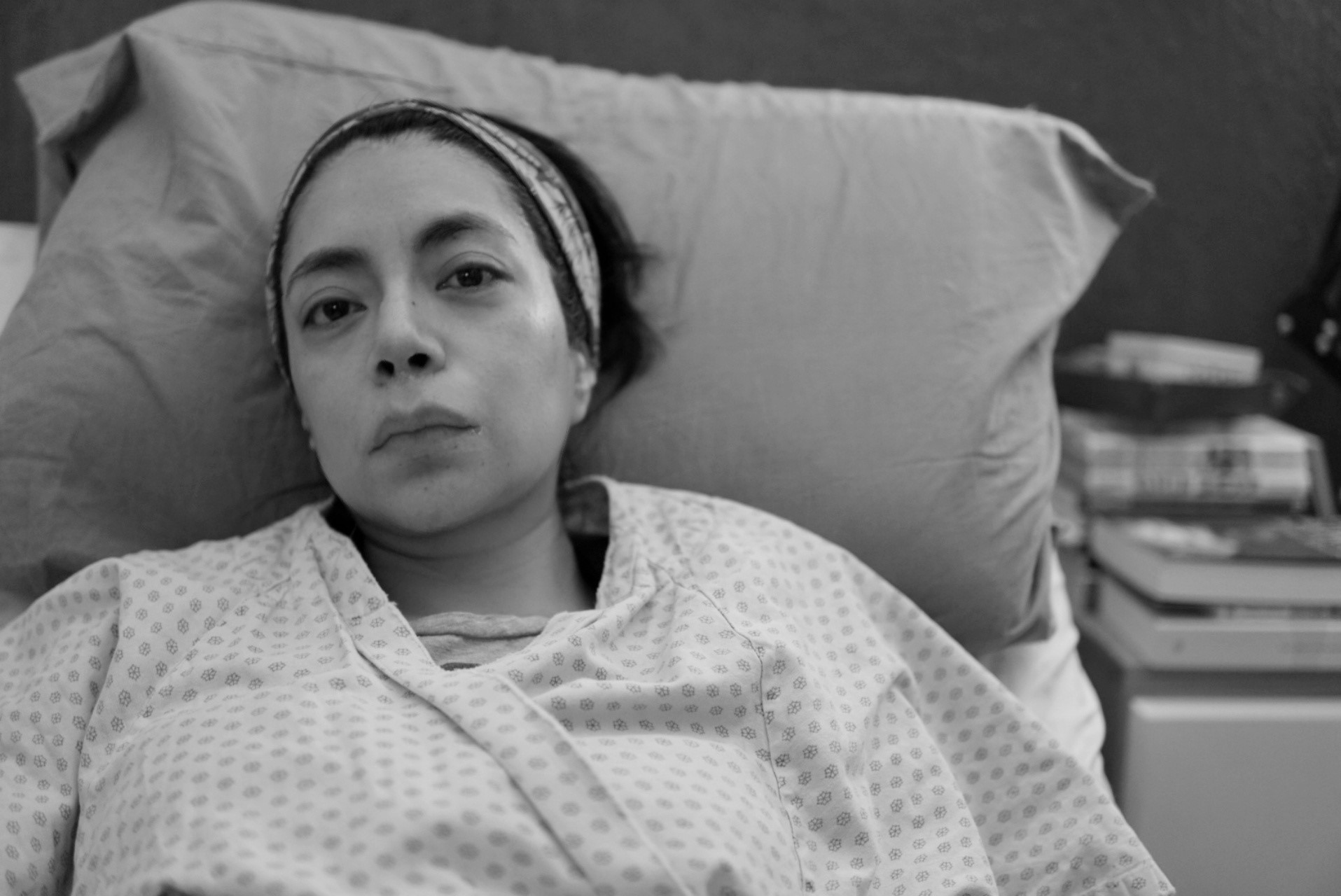Name: Daniela Herrera Villarreal Pronouns: she/her Age: 38 Home: Mexico City Sick for: 6 years
I have a genetic syndrome, Charcot Marie Tooth, whose symptoms worsened after two simultaneous infections, one in the throat and another digestive. Before, my symptoms were manageable. After the infections, weakness and extreme fatigue set in. I was unable to walk and didn’t leave my bed, despite having been a very active person with a lot of physical activity.
After the onset of ME, for almost 4 years I was at about 10% capacity, able only to perform basic activities like eating, bathing, or going to the doctor. Now, with treatment for my genetic disorder, I live with 40% energy. I am able to do more activities than before, but I rarely leave the house and fatigue crises can last for weeks.
To date, I am unable to work even part-time.
I have experienced a lot of medical violence throughout my life. When ME appeared, doctors didn’t believe in my symptoms and attributed them to psychiatry. Later, they detected the genetic mutation but their behaviour didn’t improve. Many of my symptoms don’t fit within the Charcot Marie Tooth diagnosis, and it took them a long time to detect that I had developed dysautonomia. Doctors initially insisted on physical activity and sent me to rehabilitation at the hospital. This worsened my symptoms and I experienced several fainting episodes due to extreme fatigue. Physical and cognitive fatigue are the most limiting factors in my day-to-day life.
We are generally treated as liars or lazy. I hope recognition would generate greater empathy for those who suffer from ME, meaning that people around us would understand that as sick and disabled individuals we need reasonable accommodations and support to be included.
I miss going for a run, swimming and enjoying the training I used to do. Also, I miss going on vacation and constantly exploring new places in my city. Due to my symptoms, leaving the house becomes very complicated. And with sensory sensitivity and fatigue, the outside world becomes very hostile to my body.
This new life, although extremely difficult, has led me to meet many people with whom I share similar experiences and who make me feel supported every day. Even though I don’t go out, through social media I have met people from around the world with whom I share understanding.
Building a community saved my life. Sharing our story is also activism and it undoubtedly helps other people feel understood. I am proud of my experience as a cyberactivist for the rights of women with chronic illnesses and disabilities and the new narratives I have created around living with ME.
If a cure for ME was found tomorrow, I would go on holiday by the sea.
In Mexico, when ME is mentioned it is mainly as Chronic Fatigue Syndrome, often just as the vague symptom ‘Chronic Fatigue.’ Doctors and the few health authorities who recognise the condition present it as a nuisance that can be treated, if not cured, by exercise and therapy. ME is simply not recognized as a complex neuroimmune illness that even in its mild form can be absolutely devastating. Most physicians don’t understand post-exertional malaise and unintentionally harm ME patients by prescribing exercise.
Even in countries with updated guidelines (like recent NICE and CDC texts) most healthcare workers and the general public have internalised misinformation and stigma. As a #GlobalVoiceForME, I would like to urge the world’s health authorities to make a directed effort to change the narrative and support patients. And there needs to be much greater investment and urgency in researching Myalgic Encephalomyelitis.
#GlobalVoiceForME Daniela Herrera Villarreal

To answer the questions took Daniela 4 days. She had to answer little by little, because the effort caused increased headache and mental confusion.



